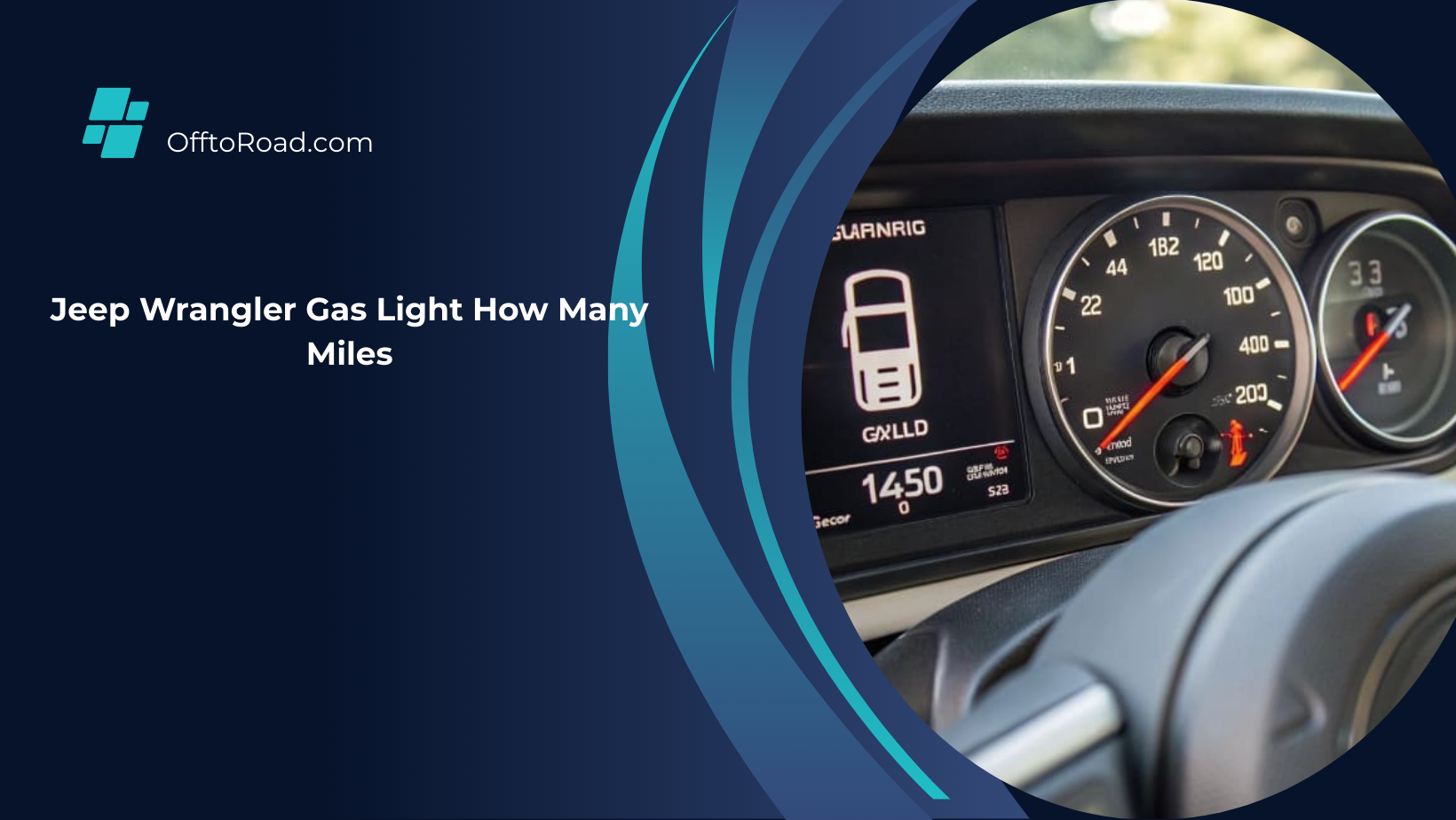When the gas light comes on in a Jeep Wrangler, you usually have about 2 to 3 gallons left, which can last for 30 to 50 miles, depending on driving conditions.
If you drive a Jeep Wrangler, you might’ve seen that little gas light pop on and wondered, “How many miles can I still go before I run out of gas?” Don’t worry—you’re not alone! A lot of us have been there, watching that fuel warning light and hoping we make it to the next gas station.
In this article, I’ll explain how far you can usually drive once your Jeep Wrangler gas light comes on, and I’ll share a few helpful tips to avoid running out of fuel. Let’s dive in!
How much gas is left in a Jeep Wrangler when the light comes on?
When the light comes on, you usually still have about 2 to 3 gallons of gas left in the tank. So yes, your Jeep is giving you a fair warning—not an immediate “game over.”
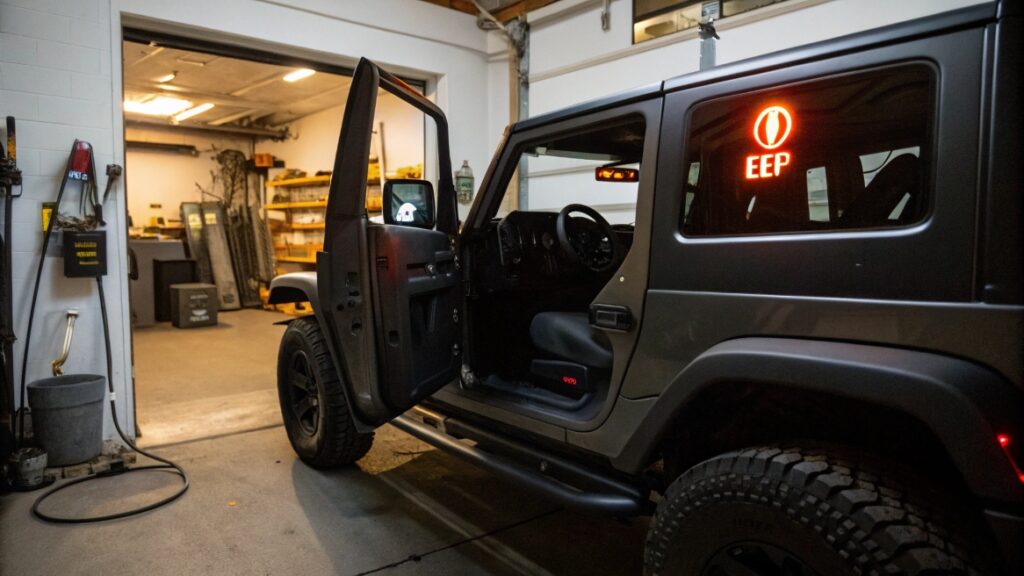
Now, let’s take a closer look depending on your model.
- If you’re cruising around in an older Wrangler like a TJ or YJ, you’ve likely got around 2 gallons left.
- On the other hand, if you’re driving a newer model—like the JK or JL—you probably have a bit more breathing room, with about 2.5 to 3 gallons still in the tank.
So, what does that actually mean in terms of distance?
In most cases, that leftover fuel can carry you anywhere from 30 to 50 miles, depending on how fast you’re driving and what kind of roads you’re on. If you’re on the highway, you might stretch it out a bit more. But if you’re in stop-and-go traffic, you’ll burn through it quicker.
Now here’s the thing:
Even though it’s nice to know you’ve got some backup, it’s not a good idea to make a habit of running on empty. Doing that too often can put extra stress on your fuel pump, which could lead to costly repairs later on. And let’s face it—no one wants to deal with surprise car trouble.
So the next time that light pops on, here’s what I’d do:
Take a deep breath, know you’ve still got a little cushion, and try to hit the nearest gas station when it’s convenient. It’s just one of those little things that helps keep your Jeep happy—and you out of trouble.
How many miles can I drive after the gas light comes on in a 2001 Jeep Grand Cherokee?
When that low fuel light comes on, it usually means you’ve got about 2 to 3 gallons of gas left in the tank. That might sound like a tight squeeze, but depending on a few things, it could still take you about 30 to 50 miles further down the road.
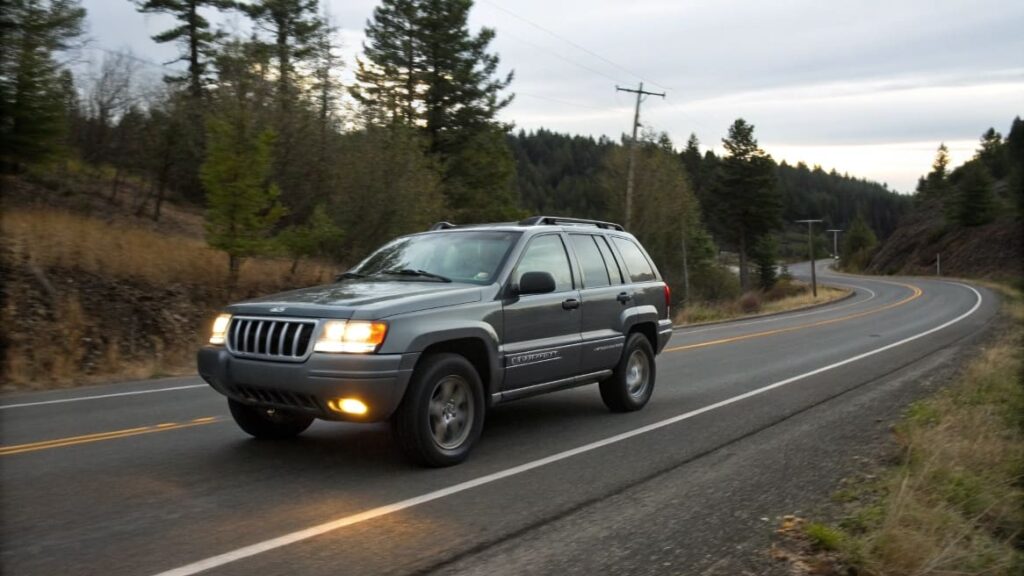
Now, keep in mind, your exact range depends on things like:
- How fast or aggressively you’re driving
- Whether you’re on the highway or stuck in stop-and-go city traffic
- The overall condition of your Jeep—like your engine health and tire pressure.
What do other drivers say?
From what many Grand Cherokee owners have shared, most people are able to go around 40 miles after the light comes on. So yes, you’ve got a bit of wiggle room—but it’s still not something you want to gamble with too often.
Here’s why: driving too long on a nearly empty tank can wear out your fuel pump. And that’s one part you really don’t want to mess with—it sits inside your gas tank and actually needs fuel to stay cool and work properly.
So, what should you do?
When you see that warning light, take a breath—it’s not the end of the world. But it is your Jeep’s friendly way of saying, “Hey, let’s not push our luck. Time for a fill-up soon.”
If you’re curious, I can also help you figure out a more specific number based on your usual miles per gallon—just let me know!
How many miles can a Jeep Wrangler go on E?
First things first: E doesn’t mean you’re out of gas just yet.

When your Wrangler hits E, it usually still has a little bit left in the tank—about 2 to 3 gallons, depending on your model. So even though it looks empty, your Jeep is giving you a grace period.
Okay, but how many miles is that?
On average, that gives you anywhere from 30 to 50 more miles.
Now, that number can shift a bit depending on:
- How fast you’re driving
- Whether you’re on the highway or stuck in traffic
- And how healthy your Jeep is overall (things like your tires and engine matter!)
If you’re driving gently on open roads, you might stretch it closer to 50 miles. But if you’re in stop-and-go traffic or climbing hills, it could drop closer to 30 miles—sometimes even less.
But here’s something important to keep in mind:
Even though it’s nice to know you’ve got a bit of a buffer, running on E too often isn’t great for your Jeep. Your fuel pump actually relies on gas to stay cool and lubricated, and running low all the time can wear it out faster. And trust me, replacing a fuel pump isn’t cheap or fun.
So, what should you do?
If your gauge hits E, don’t freak out—but don’t wait forever either. Think of it like your Wrangler quietly saying, “Hey buddy, let’s hit a gas station soon, yeah?”
So yes, you’ve got a bit of room to breathe—but it’s always better to fill up sooner than later. Your Jeep will thank you (and so will your wallet).
How Much Gas Left When The Warning Light Turns On?
Alright, let’s talk about that warning light that pops up when you’re low on gas. We’ve all seen it, and it can make you wonder, “How much gas do I really have left?”
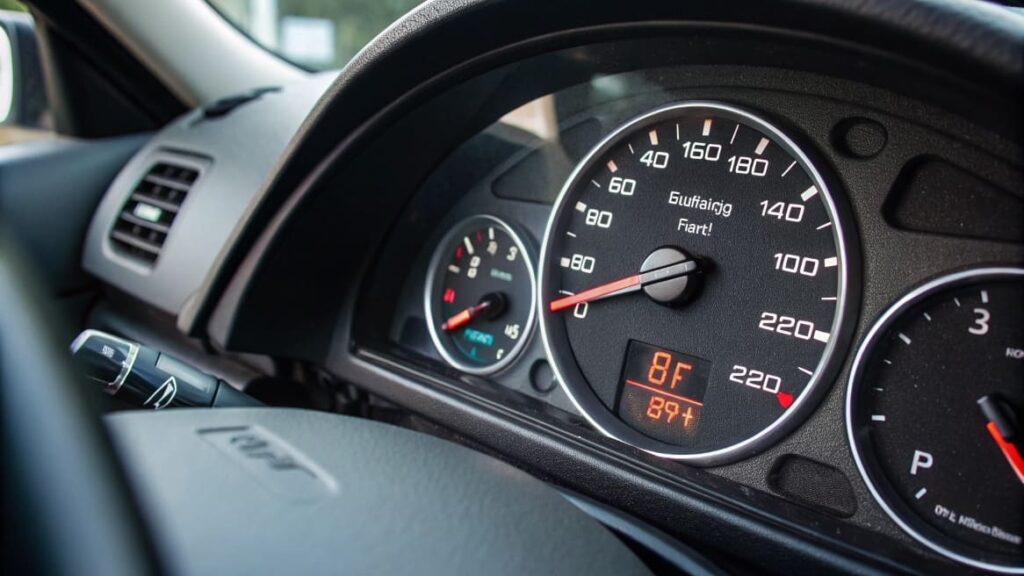
So, how much gas is actually left when the light comes on?
When the warning light flicks on, don’t panic just yet! Typically, you still have around 2 to 3 gallons of fuel in the tank. It’s like your car’s way of giving you a heads-up that you’re running low—but you’re not completely out of gas.
Now, how far can you actually go with that?
With 2 to 3 gallons left, you can usually drive anywhere from 30 to 50 miles, depending on a few factors like:
- How you’re driving (are you speeding down the highway, or stuck in traffic?)
- What kind of roads you’re on (smooth highways are easier on fuel than stop-and-go city driving)
- Your car’s fuel efficiency (your MPG plays a big role here too)
But here’s the thing—don’t push it too far!
Even though you’ve still got a little fuel left, it’s not a good idea to keep driving on E for too long. Running low too often can actually damage your fuel pump, which needs fuel to stay cool and work properly. Plus, the more you push it, the closer you get to being stranded—and no one wants that!
So, what should you do next?
When that light comes on, don’t panic—but it’s definitely time to start looking for a gas station. You’ve got a little wiggle room, but it’s always better to fill up sooner rather than later.
How many miles past the Fuel light can you drive your 2017 Jeep Renegade Trailhawk?
so you’re cruising along in your 2017 Jeep Renegade Trailhawk, and that dreaded fuel light comes on. It’s definitely a moment that can make you wonder, “How much further can I go before I’m stuck on the side of the road?” But don’t worry—you’ve still got some time!
How many miles past the fuel light can you drive?
When the fuel light comes on in your Renegade, you typically still have about 2 gallons of gas left in the tank. Depending on your driving, you can usually get 30 to 50 miles out of that, which gives you a little breathing room to find a gas station.
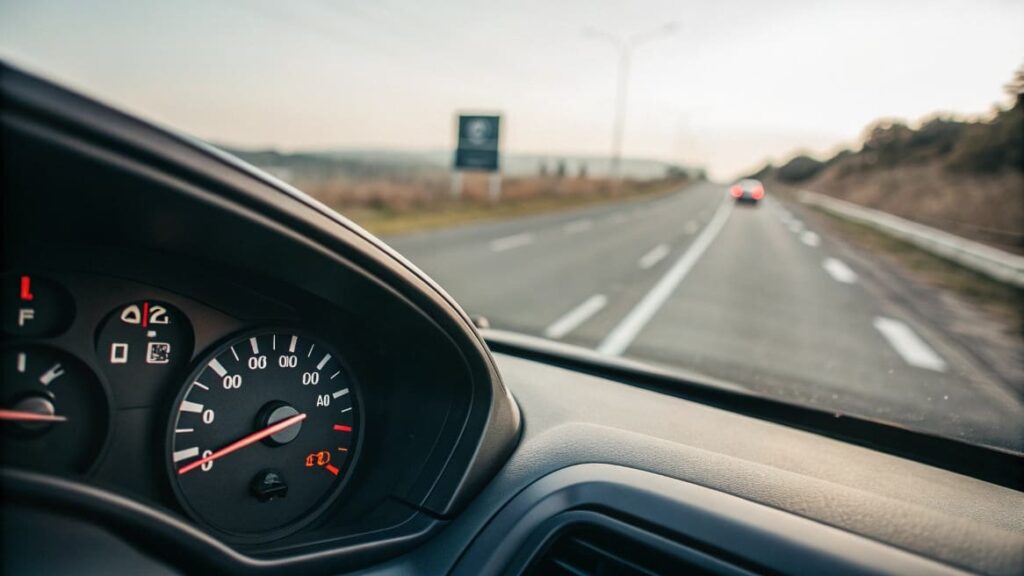
But here’s the thing:
- If you’re driving on the highway, you might be able to stretch it closer to 50 miles.
- However, if you’re in stop-and-go traffic or doing some off-roading, that range could drop to around 30 miles (or even less).
Why shouldn’t you push it too far?
While it’s nice to know you’ve got a bit of buffer left, driving too low on fuel regularly can actually hurt your fuel pump. The pump relies on the gas to stay cool and work properly, so if you run it too often with very little fuel, it can wear out faster—and that’s definitely not a cheap fix.
So what should you do?
When that light comes on, don’t panic, but definitely start looking for a gas station. You’ve got a little leeway, but it’s always better to fill up sooner than later to keep your Jeep running smoothly.
Jeep wrangler gas light how many miles 2022?
If the fuel light comes on in your 2022 Jeep Wrangler, you typically have about 2.0 gallons left in the tank, which should get you around 30 to 50 miles. How far you can go depends on your driving—highway miles can stretch that further, but city driving or heavy loads might reduce it. It’s important not to push it too often, as running low frequently can damage your fuel pump. So, while you’ve got some wiggle room, it’s best to find a gas station soon!
FAQ’s
1.How to Check “Miles to Empty” on Your Jeep Wrangler?
To see the “Miles to Empty” on your 2024 Jeep Wrangler, all you need to do is:
- Start the Jeep (make sure it’s in Park).
- Use the steering wheel controls to scroll through the display.
- Look for the Fuel Economy screen where the “Miles to Empty” will show up.
It’s super easy to find, and it gives you a live estimate based on how much gas is left.
2.How many miles can you get on a gas tank on a Jeep Wrangler?
In a Jeep Wrangler, you can usually get about 300 to 400 miles on a full tank of gas. This depends on how you drive and the model you have. With a 21.5-gallon tank, you’ll get around 15 to 20 miles per gallon. If you’re driving on the highway, you might reach 400 miles, but city driving or off-roading will likely reduce that a bit. Different trims of the Wrangler might also affect how far you can go.
3.How many miles are left when a Jeep says low fuel?
When the low fuel light comes on in your Jeep, you usually have about 2 to 3 gallons of gas left. That should give you around 30 to 50 miles before you’re completely out. Of course, how far you can go depends on how you drive and the road conditions. It’s always best to fill up soon to avoid running out of gas!
4.Does the fuel range decrease if I have a full load in my Jeep Wrangler?
Yes, if your Jeep Wrangler is carrying a full load, your fuel range will decrease. The extra weight makes the engine work harder, using more gas and causing the Miles to Empty display to drop faster. So, it’s a good idea to keep an eye on your fuel if you’re loaded up.
5.What happens if I keep driving with the fuel light on in my Jeep Wrangler?
If you keep driving with the fuel light on in your Jeep Wrangler, you might run out of gas and get stuck. Also, driving on low fuel too often can damage the fuel pump, because it needs gas to stay cool and work properly. It’s always best to fill up as soon as you see that light to avoid any issues.
Conclusion
Even though your Jeep Wrangler gives you a little extra time when the fuel light comes on, it’s not a good idea to keep driving too long. Running low on gas too often can damage the fuel pump and cause problems. It’s best to fill up soon to keep your Jeep happy and avoid any surprises.
